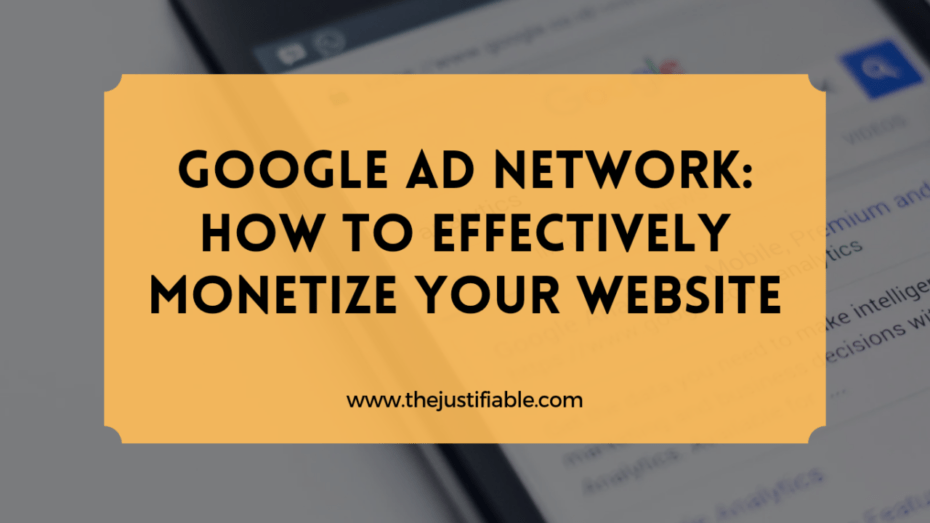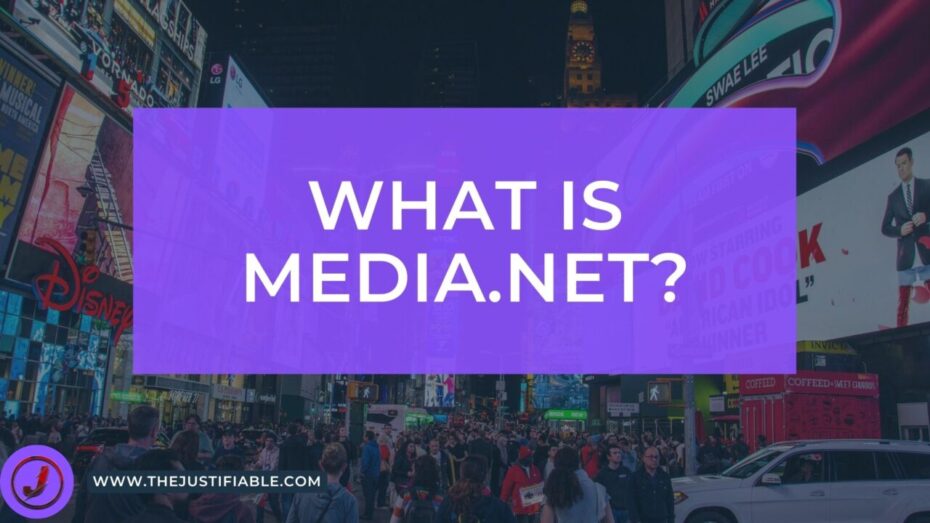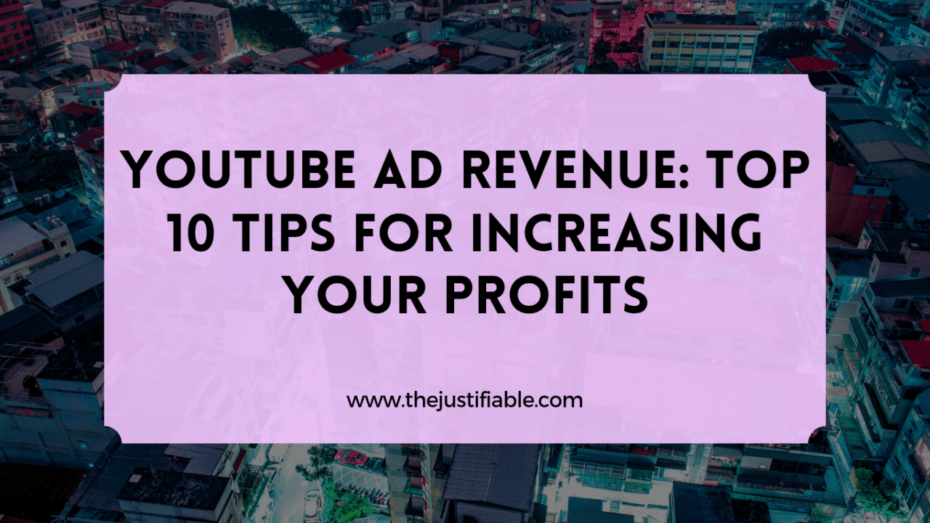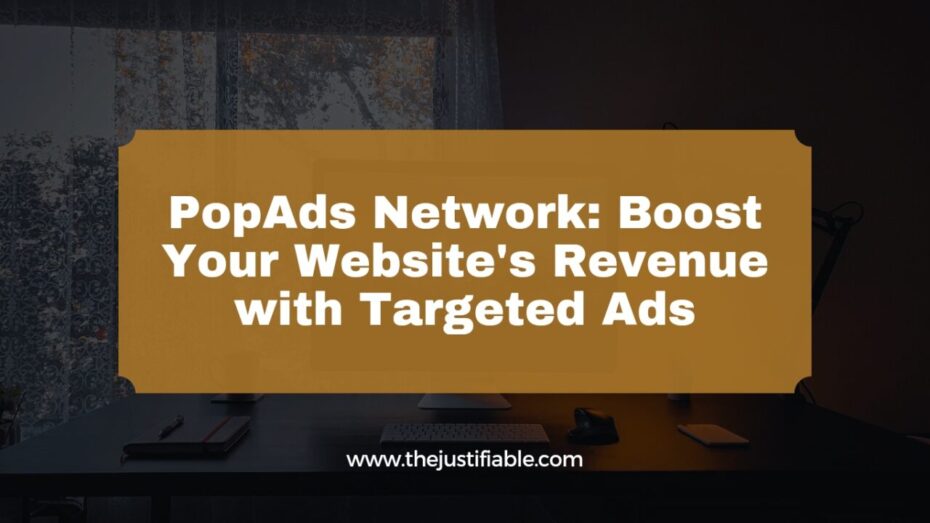Disclosure: This post contains affiliate links, which means that if you click on them and make a purchase, I will receive a commission. Read our Disclaimer for More.
In today’s digital world, monetizing your online presence has become crucial. One popular method is through the Google Ad Network, an ensemble of online platforms designed to help website owners and online businesses generate revenue through targeted ads.
This section aims to provide a clear understanding of Google Ad Network and the reasons why it’s a preferred choice for website monetization.
Understanding Google Ad Network and its role in website monetization
Google Ad Network, which includes Google Ads (formerly Google AdWords) and Google AdSense, plays an integral role in website monetization. Google Ads allows businesses to place advertisements on various online platforms, including search engine result pages and third-party websites.
Conversely, Google AdSense serves as the conduit between these businesses and website owners. When you sign up your website for Google AdSense, it becomes part of Google’s ad space inventory.
How does this lead to monetization? When businesses use Google Ads to advertise, their ads could potentially appear on your website. If a visitor to your site clicks on these ads, you earn revenue – this is known as a Pay-Per-Click (PPC) model.
Alternatively, you can also earn through the Cost Per Thousand Impressions (CPM) model where you get paid based on the number of times the ad is viewed, not just clicked.
Through the Google Ad Network, website owners can transform their digital spaces into valuable advertising real estate, effectively turning traffic into profit. Additionally, the sophisticated algorithms used by Google ensure that the ads displayed are relevant to the site’s content and its visitors, further enhancing the chances of interaction and conversion.
Why choose Google Ad Network to monetize your website?
Choosing the Google Ad Network to monetize your website comes with a plethora of benefits. Firstly, Google’s wide-ranging reach is unrivaled; with millions of websites using AdSense and countless businesses using Google Ads, the likelihood of finding an advertiser that aligns with your website’s content is exceptionally high.
Secondly, Google’s robust targeting system enhances user experience by serving ads relevant to your audience’s interests and search history. This increases the chances of ad engagement and consequently, your revenue.
Thirdly, Google provides comprehensive reporting tools, enabling you to monitor your ad performance, track earnings, and gain insights into your audience’s behavior. This data can be instrumental in refining your website content and overall monetization strategy.
Lastly, Google Ad Network is fairly simple to set up and use. Even without extensive technical knowledge, you can get started with monetizing your website fairly quickly.
Setting up Google Ad Network for your Website
Before you can start earning from the Google Ad Network, you need to set up your account and customize your ad settings. This process might seem daunting, but it’s relatively straightforward once you grasp the basics.
This section will guide you through the steps to set up Google Ad Network, choose the right ad formats, and customize ads to fit your website’s aesthetics.
Step-by-step guide to set up Google Ad Network
Getting started with the Google Ad Network primarily involves registering for a Google AdSense account. Here’s a step-by-step guide:
Visit the Google AdSense website: Navigate to the Google AdSense website and click on “Get Started“.
Fill in the necessary information: You’ll need to provide details about your website, email address, and preferred payment method.
Connect your site to AdSense: Once your account is set up, you’ll receive a piece of code, often referred to as AdSense HTML. You’ll need to insert this code into your website’s HTML. This allows Google to analyze your website and ensure it complies with their policies.
Wait for approval: After inserting the code, submit your site for review. The approval process usually takes a few days. Once approved, ads can start appearing on your site.
Set up your ad preferences: Customize the types of ads that you want to display on your website. You can choose the ad types and formats that best align with your site’s layout and audience.
Choosing the right ad formats for your website
The Google Ad Network offers a range of ad formats, and the right one for you depends on your website’s design and content. Some popular formats include display ads, text ads, link units, and responsive ads.
Display ads include images and are highly visual. Text ads are simpler, containing only text. Link units display a list of topics relevant to your site’s content. Responsive ads automatically adjust their size, appearance, and format to fit just about any available ad space.
Consider your website’s layout and audience when choosing ad formats. For instance, if your website has a lot of visual content, display ads might be a good fit. Alternatively, if your website is text-heavy, text ads or link units might blend better.
Customizing ads to match your website’s aesthetics
AdSense allows you to customize your ads to match the look and feel of your website, improving the user experience and increasing the likelihood of engagement. You can choose the color scheme for your text ads, ensuring they complement your site’s color palette.
You can also customize the size and position of the ads. Ads should be positioned where they are likely to be noticed by visitors, but without interrupting the browsing experience. For example, placing an ad near the main content can draw attention without being disruptive.
Remember, the goal is to integrate ads seamlessly into your website. Ads that mesh well with your site’s aesthetics are more likely to perform well and lead to higher earnings from the Google Ad Network.
Maximizing Earnings with Google Ad Network
Once you have successfully integrated Google Ad Network into your website, the next step is to focus on maximizing your earnings.
Understanding key performance metrics, improving ad impressions and click-through rates, and acknowledging the importance of high-quality content and user engagement are all vital aspects of this journey.
Understanding CPM, CPC, and RPM: Key performance metrics
To effectively monetize your website using the Google Ad Network, you need to understand certain key performance metrics. These include Cost Per Mille (CPM), Cost Per Click (CPC), and Revenue Per Mille (RPM).
CPM (Cost Per Mille) refers to the amount you earn for every thousand ad impressions, regardless of whether the user clicks the ad or not.
CPC (Cost Per Click) is the amount you earn each time a user clicks on an ad on your site. The actual amount depends on various factors, including the advertiser’s bid amount and the relevance of the ad to your audience.
RPM (Revenue Per Mille) calculates the revenue you’d earn for every thousand impressions, taking into account all revenue sources including CPC and CPM. It gives a more holistic view of your earnings potential.
Understanding these metrics helps you gauge your current performance and strategize to improve earnings.
Tips to improve Ad impressions and Click-through rates
Boosting your ad impressions and click-through rates is a viable strategy to maximize your Google Ad Network earnings. Here are some tips:
Improve website traffic: More visitors to your site equate to more ad impressions. Implement SEO strategies, maintain a strong social media presence, and regularly publish engaging content to increase your site’s traffic.
Optimize ad placement: Place ads in high-visibility areas on your website. Typically, areas above the fold (visible without scrolling) perform well.
Test different ad formats: Experiment with different ad formats and sizes to see which ones resonate best with your audience and lead to higher engagement.
Mobile optimization: Ensure your website and ads are mobile-friendly. A significant portion of web traffic comes from mobile devices, so optimizing for these users is crucial.
Importance of high-quality content and user engagement
User engagement and high-quality content are central to successful website monetization through the Google Ad Network. Engaging content draws in more traffic, increases the time users spend on your site, and improves the likelihood of ad interaction.
User engagement can be fostered through regular updates, interactive elements, and a clean, user-friendly website design. High-quality content is original, relevant, and provides value to your audience. This not only attracts new visitors but also promotes repeat visits, both of which lead to higher ad impressions and potential clicks.
Strategies to Boost Google Ad Network Earnings
Monetizing your website through the Google Ad Network is more than just displaying ads; it’s about implementing effective strategies to boost your earnings.
This section delves into how optimal ad placement, mobile optimization, and Google Analytics can enhance ad performance and increase your revenue.
Optimal ad placement for higher revenue
The placement of ads on your website can significantly impact your earnings. Well-placed ads are more likely to be seen and interacted with, leading to higher ad impressions and click-through rates.
Here are a few strategies to achieve optimal ad placement:
Above the fold: Place ads in areas that are immediately visible without scrolling. This increases the likelihood of visitor interaction.
Near engaging content: Ads placed near high-engaging content tend to perform well as they’re likely to be seen while visitors read or interact with your content.
In-content ads: Integrating ads within your content can be highly effective. However, ensure they don’t disrupt the user’s reading experience.
Test and iterate: Monitor your ad performance and experiment with different placements. Google AdSense’s heatmap can provide useful insights on this.
Leveraging mobile optimization to enhance ad performance
With an increasing number of internet users accessing websites via mobile devices, it’s crucial to optimize your ads for mobile viewing. Not only does this improve user experience, but it also maximizes ad visibility, leading to potentially higher earnings.
Here are some tips for mobile optimization:
Responsive ad units: Google Ad Network offers responsive ad units that automatically adjust their size and format based on the screen size and orientation.
Mobile-friendly website design: Make sure your website’s design is mobile-friendly. A mobile-optimized site ensures ads are properly displayed and easily viewable on smaller screens.
Page load speed: Mobile users often have less patience for slow-loading websites. Optimizing your site for fast loading can decrease bounce rates and increase the chances of ad interactions.
Using Google Analytics to understand audience behavior and ad performance
Google Analytics is a powerful tool that provides valuable insights into your audience’s behavior and your ad performance. By analyzing this data, you can refine your strategies to boost your Google Ad Network earnings.
You can use Google Analytics to understand:
User behavior: How much time users spend on your website, which pages they visit, what content they engage with most. This can help you place your ads strategically.
Demographics: Information about your audience’s age, location, language, etc., can help you tailor your content and ads to better suit your audience’s preferences.
Traffic sources: Understanding where your traffic comes from (search engines, social media, direct visits, etc.) can inform your marketing strategies.
Ad performance: Google Analytics can also help you track which ads perform best in terms of clicks and revenue.
Ensuring Compliance with Google Ad Network Policies
To maintain a successful and sustainable relationship with the Google Ad Network, understanding and complying with their policies is crucial. These policies aim to create a safe and positive environment for all users—advertisers, publishers, and viewers alike.
This section aims to shed light on Google Ad Network’s policies for publishers, common violations to avoid, and how to handle policy violations or ad restrictions.
Understanding Google Ad Network policies for publishers
The Google Ad Network policies for publishers are designed to promote high-quality content, protect advertisers, and ensure a good user experience. The policies cover various aspects including, but not limited to, the following:
Content quality: Publishers must provide meaningful and original content that adds value to users. Websites filled with low-quality content or content created for the sole purpose of driving traffic to ads are not allowed.
Prohibited content: Google Ad Network has a list of prohibited content, such as adult content, violent content, and content that promotes discrimination or illegal activities.
Ad behavior: Ads should not mislead or trick users into clicking them. Also, they must not disrupt the user’s browsing experience.
Traffic sources: Publishers are expected to drive authentic traffic to their websites. Any form of artificial traffic is not permitted.
Staying compliant: Avoiding common violations
Many publishers unknowingly violate Google Ad Network policies, resulting in ad restrictions or account suspension. Here are some common violations to avoid:
Clicking own ads: Clicking your own ads or encouraging others to do so is strictly prohibited.
Manipulative content: Creating content that tricks users into clicking ads, or placing ads in a way that can lead to accidental clicks is not allowed.
Copyright infringement: Using copyrighted content without permission can lead to policy violation.
Manipulating how ads are served: Altering the ad code or manipulating how ads are displayed is a violation of Google Ad Network’s policies.
Dealing with policy violations and ad restrictions
If you find that your ads have been restricted or your account has been suspended due to a policy violation, it’s important to address the issue promptly.
Firstly, understand the policy that has been violated. Google usually provides a detailed explanation about the violation. Once you’ve understood the issue, take corrective action. This might involve removing or modifying the offending content, changing the ad placement, or taking other actions depending on the specific violation.
Once you’ve made the necessary changes, you can submit an appeal to Google. Google will review your site again and if the issue has been resolved, the ad restrictions may be lifted and your account reinstated.
Google Ad Network Alternatives
While the Google Ad Network is an effective platform for monetizing your website, it’s not the only choice available. Exploring other ad networks can provide additional opportunities to enhance your revenue or offer solutions that might be better suited to your specific needs.
This section will provide an overview of other ad networks to consider and a comparison with the Google Ad Network.
Overview of other ad networks to consider
There are several other ad networks that you can consider as alternatives to the Google Ad Network:
Media.net: This ad network is powered by Yahoo and Bing, and it offers a wide range of ad types, including contextual ads, display ads, and native ads.
Infolinks: Infolinks is known for its innovative ad products that aim to overcome banner blindness. Their ads are typically integrated into a website’s content, providing a non-disruptive user experience.
Amazon Advertising: Given the massive reach of Amazon, their ad network can be a great choice for publishers. They offer display ads, sponsored products, and even video ads.
Adsterra: This is a rapidly growing ad network that offers various ad formats and monetization methods. They provide services for both publishers and advertisers.
PropellerAds: Known for their pop-under ads, PropellerAds offers a range of monetization options and aims to provide high-quality traffic and higher ad revenue for publishers.
Comparison of Google Ad Network with other ad networks
When comparing the Google Ad Network with other ad networks, several factors come into play, including the type of ads offered, payout thresholds, payment methods, and support services.
Ad types: While Google Ad Network primarily offers display and text ads, other networks like Media.net and Infolinks also offer contextual and in-text ads.
Payout thresholds and methods: Google Ad Network has a payout threshold of $100 and pays via EFT or check, while other networks may have lower thresholds and more payment options, like PayPal.
Customer Support: Google is known for its extensive online support resources but might not offer personal support to all publishers. In contrast, smaller networks might offer more personalized support.
Approval process: Google Ad Network has a rigorous approval process, and not all sites will qualify. Some alternatives have less strict criteria, making them more accessible to smaller or newer sites.
Revenue potential: Google Ad Network generally offers high CPM rates due to its large pool of advertisers and advanced targeting capabilities. However, depending on your site’s niche and audience, other networks may provide competitive rates.
Conclusion
Monetizing your website can be a challenging yet rewarding venture. The Google Ad Network has been a reliable partner for countless publishers worldwide, providing an opportunity to generate significant income from their online content.
Let’s wrap up with some final thoughts on maximizing website monetization with Google Ad Network and a glimpse into the future of website monetization.
Final thoughts on maximizing website monetization with Google Ad Network
The Google Ad Network offers a comprehensive set of tools for website monetization, but your success depends on a balanced approach that combines ad optimization, user engagement, content quality, and policy compliance.
Here are the key takeaways:
Understand the platform: Familiarize yourself with the Google Ad Network, its capabilities, and its policies. This understanding will inform your strategies and help you avoid costly mistakes.
Focus on quality: Quality content attracts quality traffic. Ensure your website offers valuable, engaging content that meets the needs of your audience.
Optimize ad placement and format: Test different ad placements and formats to determine what works best for your website and audience.
Leverage data: Use Google Analytics to understand your audience, evaluate your ad performance, and refine your strategies.
Stay compliant: Make sure you stay up-to-date with Google Ad Network’s policies and promptly address any violations to maintain a healthy account.
Looking ahead: The future of website monetization with Google Ad Network
Looking ahead, Google continues to innovate and adapt to the ever-changing digital landscape. With advancements in AI and machine learning, expect even more sophisticated ad targeting, delivering more relevant ads to users and potentially higher revenue for publishers.
Additionally, Google is focusing on enhancing the mobile ad experience as mobile traffic continues to rise. If you haven’t yet optimized your site and ads for mobile, now is the time to do so.
Lastly, in the face of growing concerns about privacy and data security, Google is also making strides in creating solutions that balance effective advertising with user privacy. This balance will be critical in the years to come.






